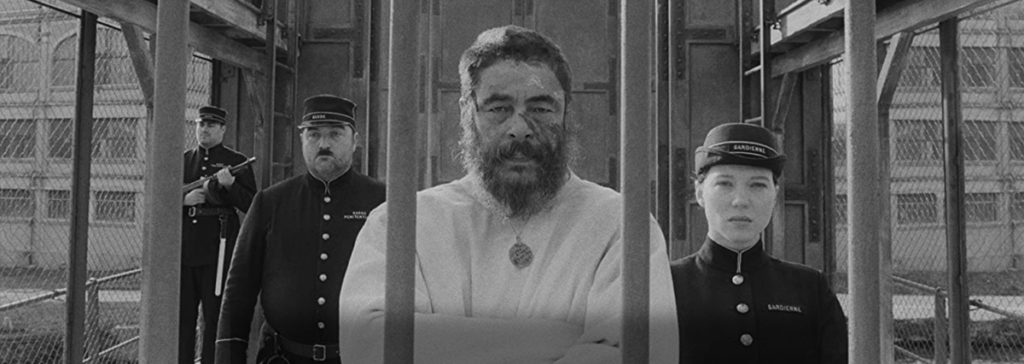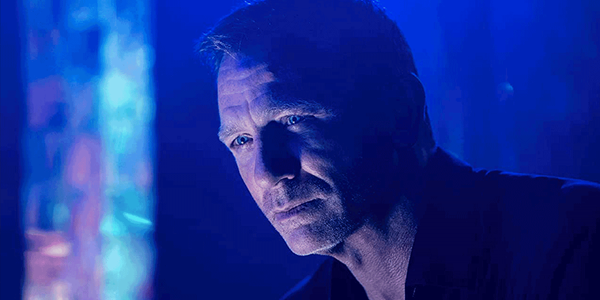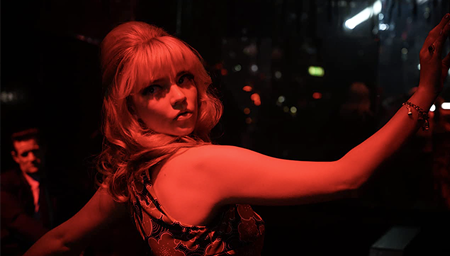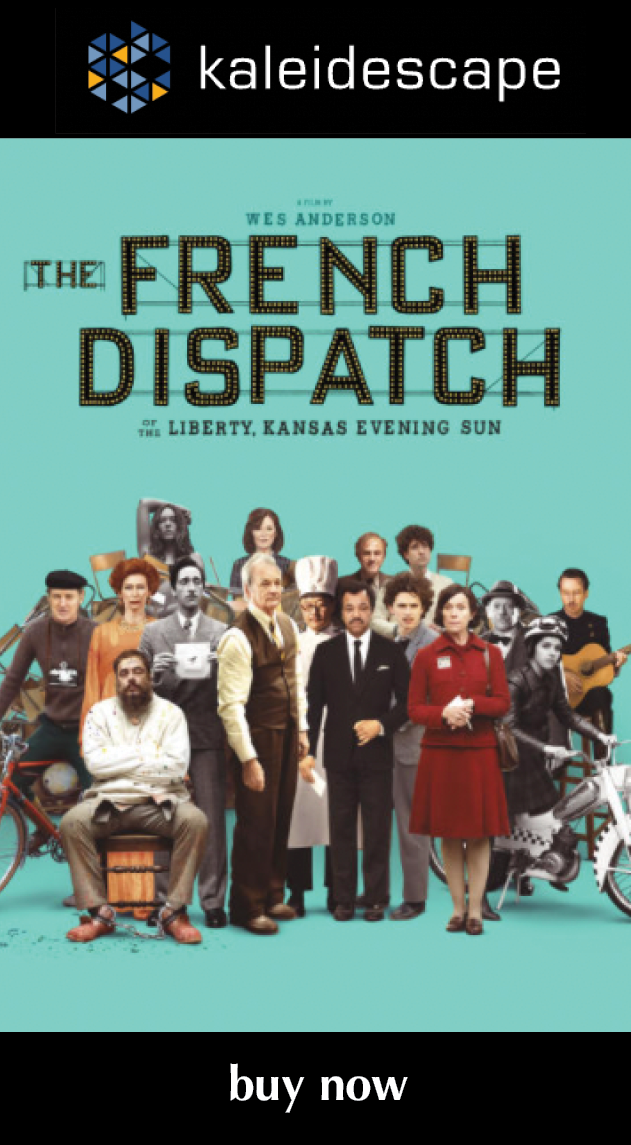
review | The French Dispatch
This most Wes Anderson of Wes Anderson films has both color and black & white, lots of aspect ratios, and a massive cast but, oddly, no HDR
by John Sciacca
December 19, 2021
I’m not sure there’s another filmmaker working today with as distinct a visual and storytelling approach as Wes Anderson. You could look at a still frame from practically any of his films and recognize it from his trademark style, with his framing, composition, colors, angles, and even casting choices.
I’m definitely a fan of his work but I’m not a super fan. While I loved his nearly all his early films, including Bottle Rocket, Rushmore, and The Royal Tenenbaums, and even more-recent titles like Moonrise Kingdom and The Grand Budapest Hotel, some of his work—The Darjeeling Limited and Isle of Dogs—just didn’t work for me. When Anderson is “on,” his quirky humor, absurdity, and whimsy make for compelling viewing. But when he’s “off,” the viewer can be left sitting there looking at a beautiful but incomprehensible and slow-moving mess.
It’s possible his latest, The French Dispatch, is the most Wes Anderson-y title to date. It’s like he’s taken all of his favorite tools—actors; music; symmetrical framing; voiceovers; aspect-ratio and color changes; and odd people thrust into bizarre situations—and amplified them. Dispatch takes all he’s learned and combines it into an amalgam of the quintessential Anderson film. Which isn’t to say it all works all the time but it’s certainly always interesting, and visually stunning.
To me, a Wes Anderson movie is a bit like receiving a fascinating and eclectic gift box. The box is beautifully polished and expertly crafted, and features attention to the finest details, and inside—cosseted into perfectly sized compartments—is a variety of beautifully wrapped and arranged curios that have no obvious connection to each other. There’s a straight-edged razor placed in a hand-carved whale-bone handle, a small pot of quince jelly, a hand-drawn map (in French!), a used (but lovingly cared for) fountain pen, and a single leather glove (size: ladies extra large). There’s often no rhyme or reason as to what is in the box but it’s a fascinating journey of discovery to see what will be uncovered under the next exquisite bit of wrapping and then trying to make sense of it.
He is also known for assembling ensemble casts, often anchored by actors that could be called “The Wes Anderson Players” for the frequency with which they appear in his films. If ever there was a director who embraced the motto, “There are no small parts, only small actors,” it’s Anderson, who fills even the smallest roles with big talent. The actors also seem to appreciate that he’s often reveling in the absurd and they lean into their roles with gusto.
In that vein, Dispatch features the deepest cast of any of his films to date. Of course, it wouldn’t be an Anderson film if it didn’t have a lengthy list of returning players, and Dispatch includes Benicio Del Toro, Adrien Brody, Tilda Swinton, Frances McDormand, Bob Balaban, Tony Revolori, Lea Seydoux, Willem Defoe, and (narrating) Anjelica Houston, along with those actors who most exemplify one of his productions: Jason Schwartzmann, Owen Wilson, and, of course, Bill Murray. Joining them are newcomers Liev Schreiber, Elisabeth Moss, Christoph Walt, Henry Winkler, Jeffrey Wright, Lyna Khoudri, and Timothee Chalamet. And that’s not even a complete list! Nearly every frame is filled with a star of some sort.
Even before the first image hits the screen you’re greeted with a classic Anderson title card letting you know you’re in for something unusual. It reads:
The following film consists of:
an OBITUARY,
a brief TRAVEL-GUIDE,
and THREE FEATURE ARTICLES
all from
THE FRENCH DISPATCH
(an American magazine
published in Ennui, France).
Arthur Howitzer Jr. (Murray) is the editor of a very New Yorker-esque newspaper/magazine called The French Dispatch. After dying from a sudden heart attack, Howitzer’s final wishes, revealed in his will, are that publication cease following a farewell issue in which three prior articles are republished along with an obituary. This sets up the series of stories, with each concluding with a brief interaction between Howitzer and the writer as he relays comments or suggestions on the submitted work.
The first featurette, “The Cycling Reporter,” follows Herbsaint Sazerac (Wilson) as he takes a cycling tour of Ennui, showing what has changed and what has remained the same in the small city over time.
“The Concrete Masterpiece,” the second tale, begins with J.K.L. Berensen (Swinson) delivering a lecture at an art gallery where she recounts a tale of the unlikely life and rise to fame of artist Moses Rosenthaler (Del Toro). Rosenthaler—imprisoned for a grisly murder—has spent 10 years without picking up a brush, and then paints an abstract nude of his muse, prison guard Simone (Seydoux), which catches the eye of art dealer Julien Cadazio (Brody) and becomes a sensation in the art world.
The third chapter, “Revisions to a Manifesto,” was the most meandering, uninteresting, and difficult tale to follow. Lucinda Krementz (McDormand) initially reports on—then becomes involved with—a student protest led by Zeffirelli (Chalamet) and ends up secretly helping him write his manifesto.
The final tale, “The Private Dining Room of the Police Commissioner,” is perhaps the most classic Anderson of the bunch. It tells of the unlikely and inexplicable events that take place one evening with the Dispatch’s food reporter, Roebuck Wright (Wright), who recounts attending a private, gourmet dinner with the Commissaire of the Ennui police force prepared by legendary officer/chef Lt. Nescaffier (Steve Park). Nescaffier is an expert in the world of a highly specialized subset of haute cuisine meant to be consumed by working police officers, with all dishes designed to be eaten by the single, non-dominant hand to leave the other hand free. Before the first course can be served, however, a crime occurs that sends the tale spiraling off into a different direction, with Anderson switching to animation for some of the storytelling.
Shot on 35mm film, this transfer is taken from a true 4K digital intermediate. Curiously, Dispatch doesn’t seem to be available in HDR—my Kaleidescape download (as well as the versions available at Vudu and Apple) was in UHD, but not with HDR—which you can only assume is the way Anderson wanted it. While images were always clean and impressive-looking, I felt the black & white scenes—which make up most of the film—could have benefitted from HDR’s extra depth and range.
Images are clean and sharp but never look digital. Closeups certainly reveal fine etched lines and pores in actor’s faces, every wild hair in Del Toro’s beard, and the wispiness of Chalamet’s mustache. Clothing like the fine stripes and thin lines in plaid suits are sharp and clear. In fact, you actually see more fine detail and texture in faces and objects when presented in b&w.
Anderson plays with the combination of color and aspect ratio as a storytelling tool, opening the frame and switching to color when it benefits a moment, such as a dramatic reveal of Rosenthaler’s latest prison masterpiece in full, widescreen color following long minutes of constrained black & white. These dramatic bursts of color often felt brighter, more intense, and more saturated because you’ve been immersed in b&w for so long then suddenly thrust into a world bursting with yellows and reds.
Similar to in The Grand Budapest Hotel, Anderson once again plays with varying aspect ratios. While I almost always prefer watching movies on a large projection screen, an argument can certainly be made for viewing Dispatch on a premium direct-view display like an OLED, where blacks are truly black. Much of the film—I’d guess 90% of it is actually in 4:3 with black bars to the left and right of the squarish image, with the remainder of the film split into 16:9 (8%) and 2.4:1 (2%). Since he often plays with the ratios, quickly shifting between all three in a matter of moments, viewing on an OLED in a dark environment means that the black bars are never distracting. Also, there are several sudden cuts between scenes that almost jarringly plunge the room into complete blackness for a few moments.
As mentioned, not everything made perfect sense (to me at least), but it was frequently a case of just sitting back and appreciating the artistry of the visuals. The perfect framing, symmetry, and composition of shots; the impeccably crafted timing; and the use of lighting. (I was struck by how much of the lighting, framing, and angles of the beginning of “Private Dining Room” were reminiscent of episodes of The Twilight Zone, making me think Wright would make a fantastic Rod Serling in a reboot.)
Sonically, the 5.1-channel DTS-HD Master mix is really designed to preserve the dialogue, and it does that admirably. Dialogue is clear and primarily anchored to the center channel, with other sounds spaced widely across the front channels when appropriate to give some width to the presentation, letting you hear when things are happening well off screen. The surrounds are definitely used to enhance the space and openness of the listening room, with reverberant echoes, ambient sounds from the streets, the blowing and whistling of wind, sounds of footsteps, etc. There are a few dynamic audio moments—some gunshots and sparks of electricity—but this is not a film designed to test your audio system.
Anderson is also known for his wonderful incorporation of music, and here we mainly enjoy the original orchestral score of bits of classical music interspersed. (There are some more “jazzy” French tunes during the second act.)
If you belong to that subset that loves Anderson’s work then you’ll be in for a treat with The French Dispatch as it offers much of what you’ve come to love. If you aren’t a fan, I daresay there’s likely nothing here to convince you otherwise. And, if you’ve yet to form an opinion of his work, go in with an open mind—and wide eyes—and, as fellow reviewer Dennis Burger said, appreciate “his predictable chaos and eccentricity.”
Probably the most experienced writer on custom installation in the industry, John Sciacca is co-owner of Custom Theater & Audio in Murrells Inlet, South Carolina, & is known for his writing for such publications as Residential Systems and Sound & Vision. Follow him on Twitter at @SciaccaTweets and at johnsciacca.com.
PICTURE | The transfer is 4K but not HDR and while images are always clean and impressive looking, the black & white scenes that make up most of the film could have benefitted from HDR’s added depth and range.
SOUND | The 5.1-channel DTS-HD Master mix is designed to preserve the dialogue, which it does admirably, while the surrounds are used to enhance the space and openness of the listening room.
© 2025 Cineluxe LLC






